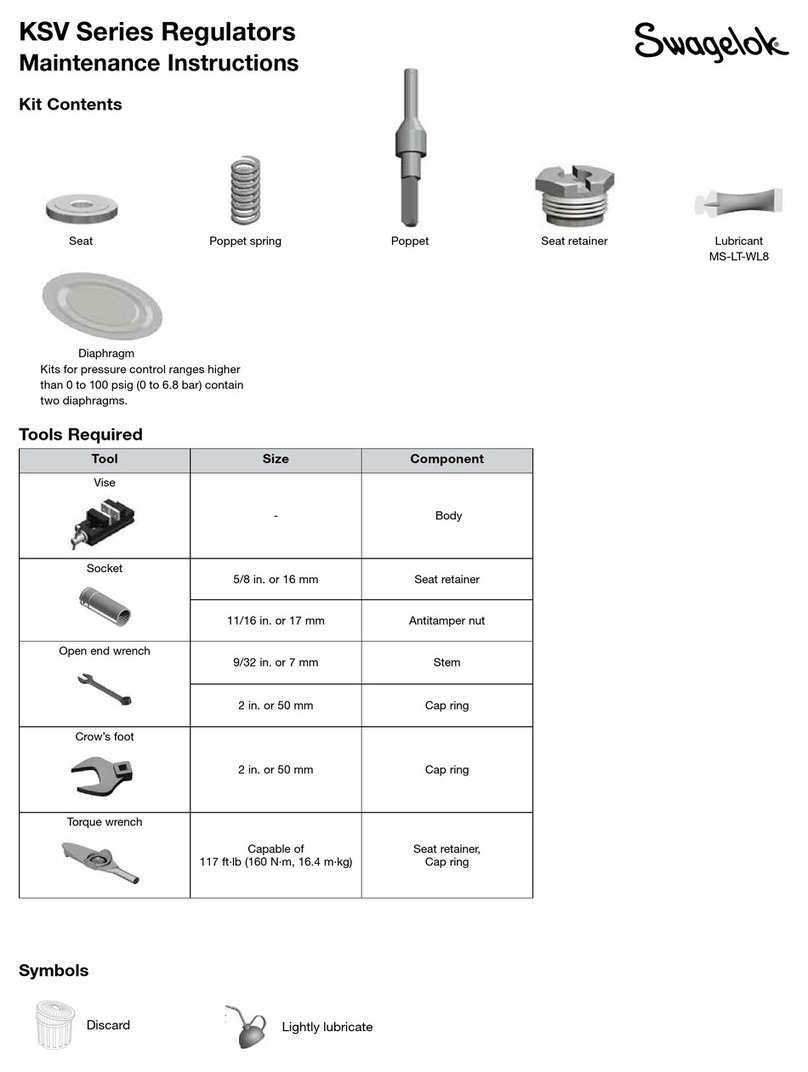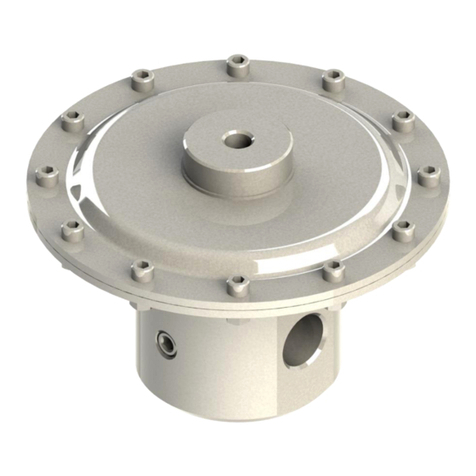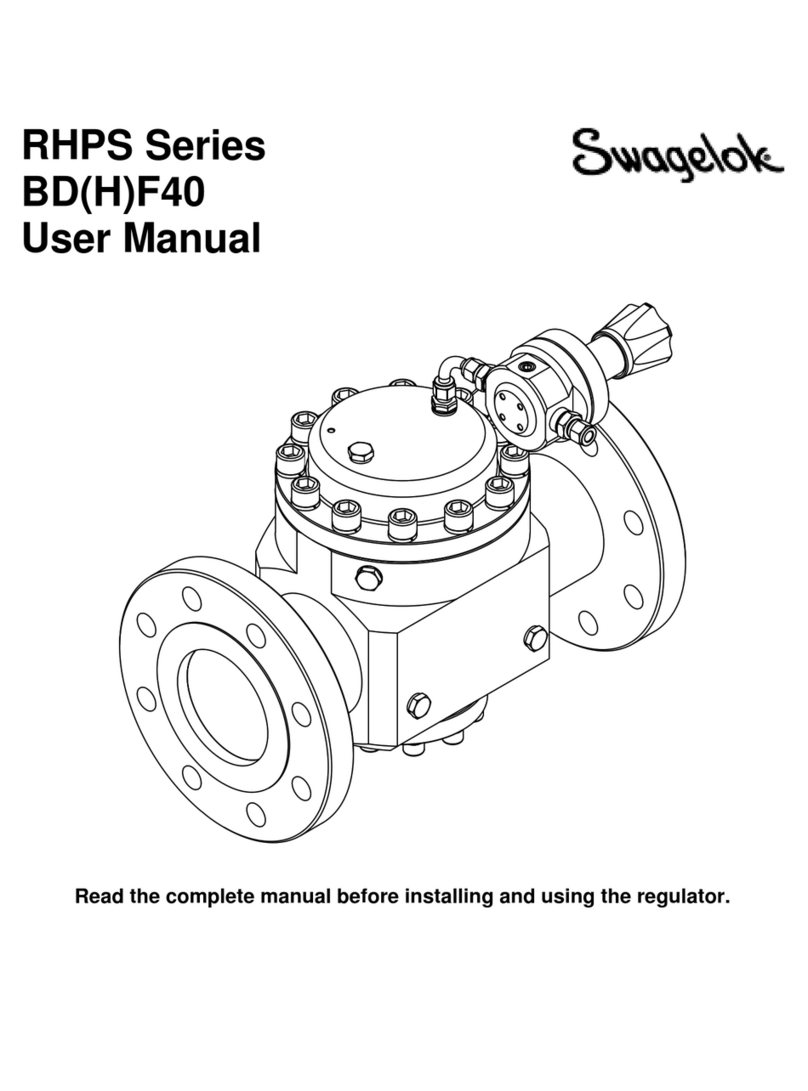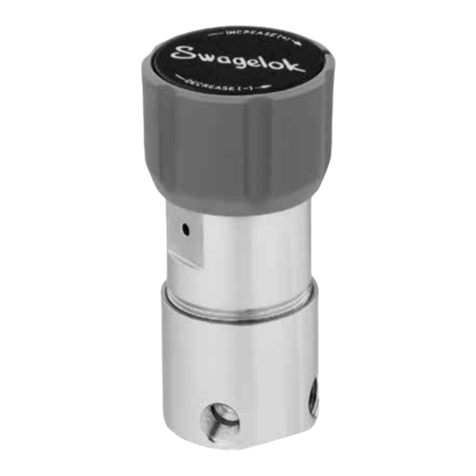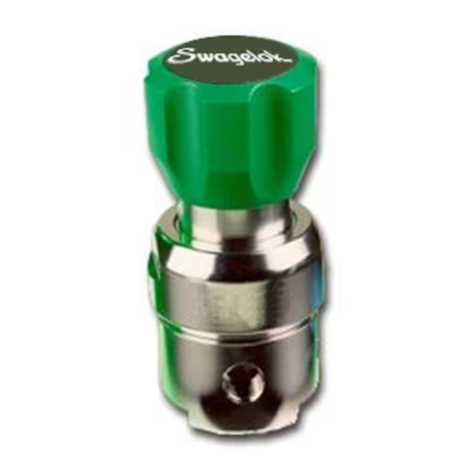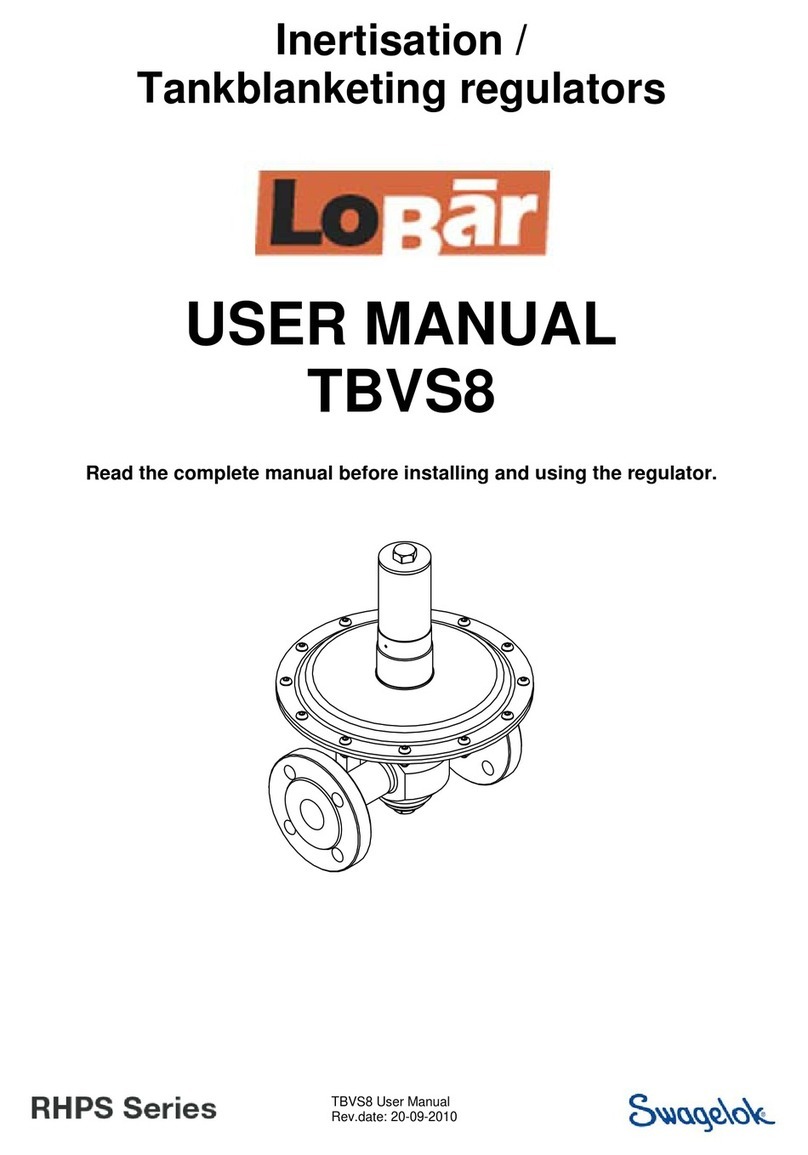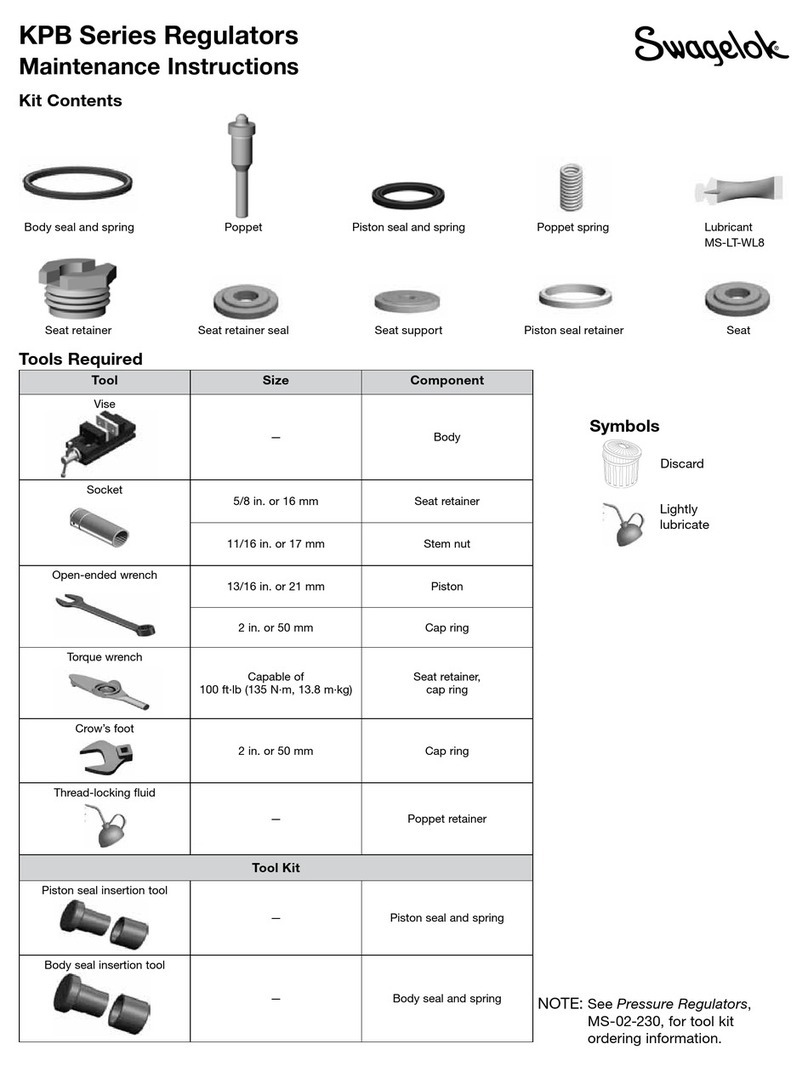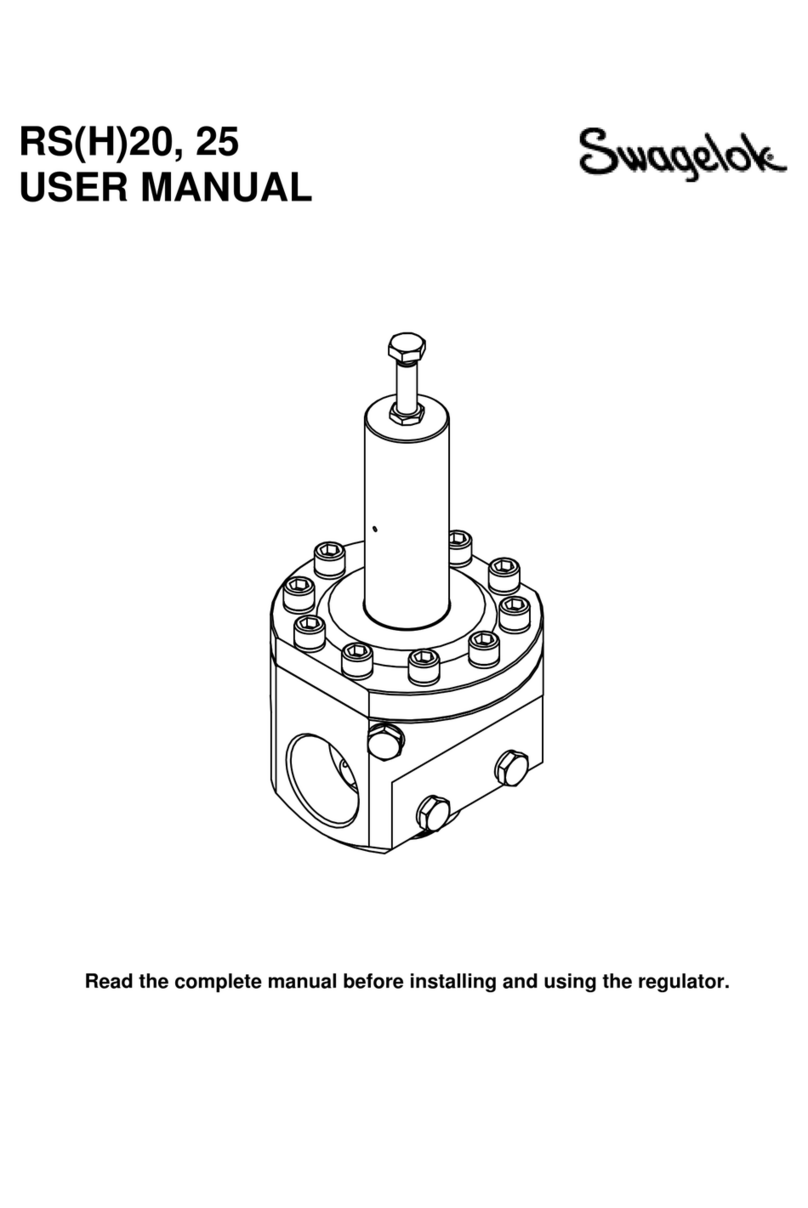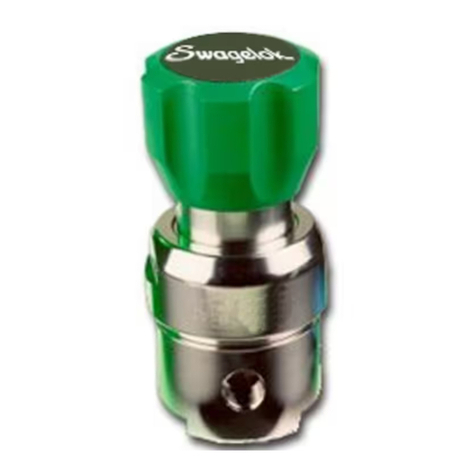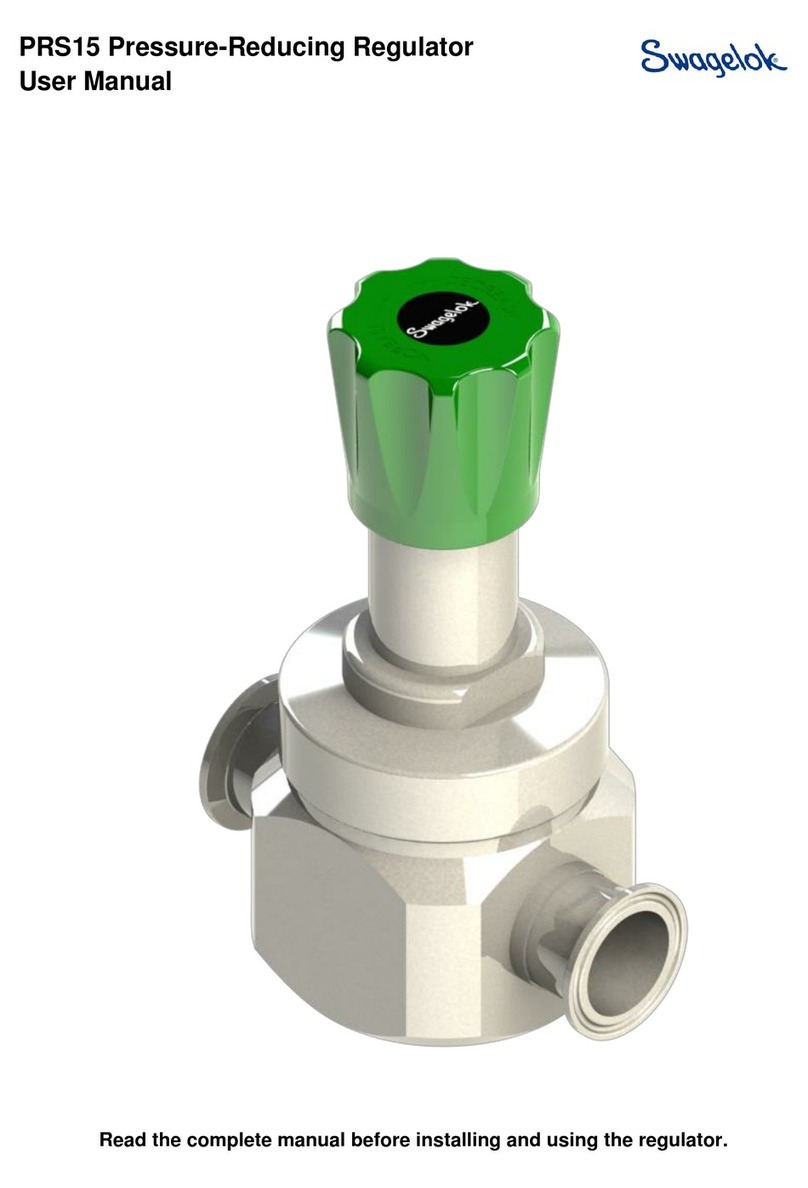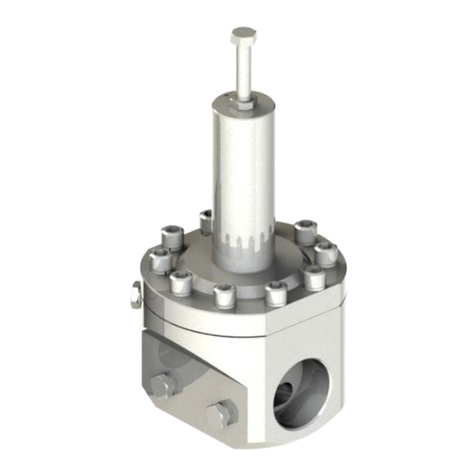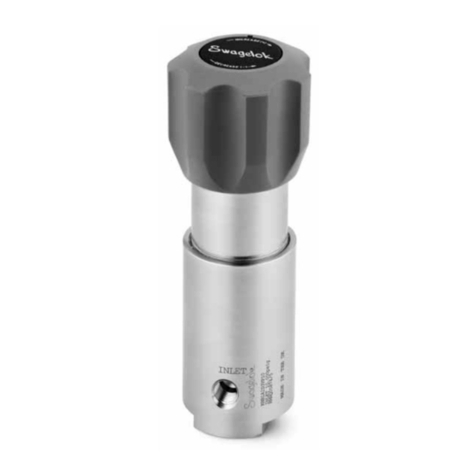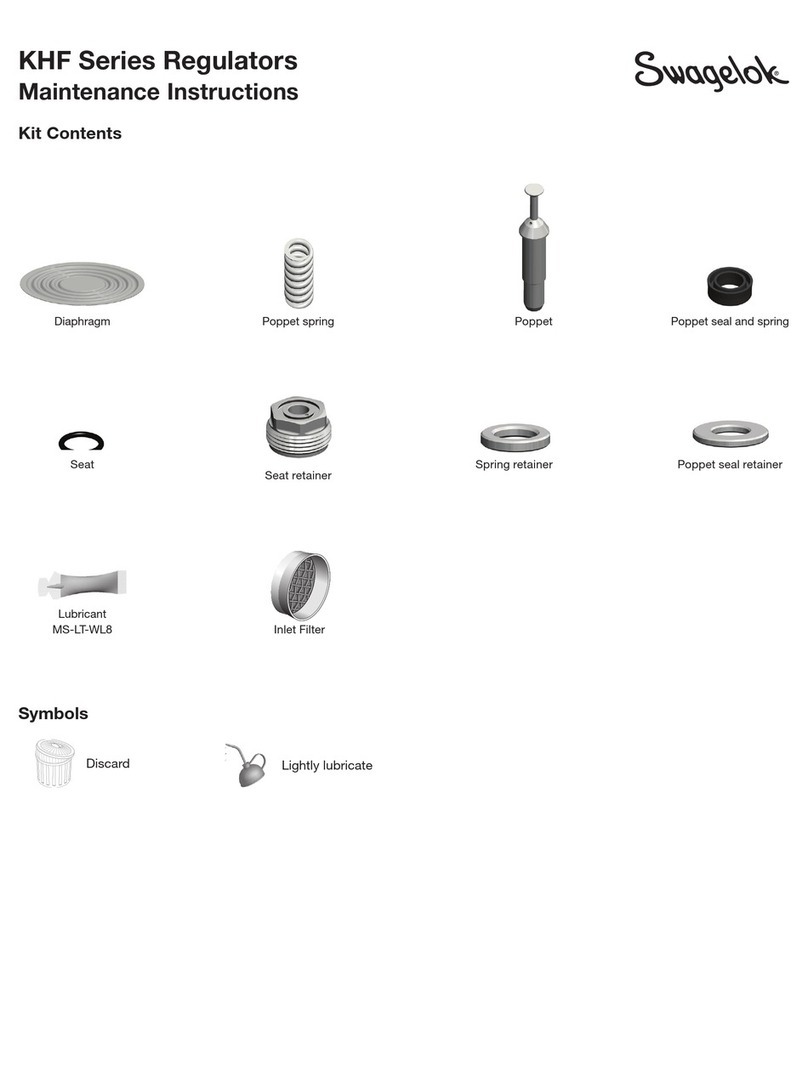4
BS(H)20 User Manual
Rev.date: 20-09-2010
1 Introduction
The function of a backpressure regulator is to maintain constant and to control an inlet pressure with a
variable flow.
These series are self contained, spring loaded, manually adjustable regulators.
They are suitable for high pressure gases and liquids and will relieve accurately over a wide variable range.
The regulators are soft seated for leak tight shut-off in zero flow conditions.
Note however, that a backpressure regulator is not a shut-off valve and should not be used as such.
The maximum supply pressure is:
- 70 bar for models BS20
- 250 bar for models BSH20
The maximum outlet pressure is:
- 70 bar for models BS20
- 250 bar for models BSH20
- Flanges models: depends on the pressure rating of the flanges.
1.1 Description
The regulator comprises a body and spring housing joined together by bolts. The body has a removable
seat, and valve assembly.
A sensing element is inserted in the spring housing.
The regulators are in a high accuracy format with a large diaphragm or piston combined with a strong
spring. This gives a relatively high knob torque which could be undesirable for frequent readjustment type
applications.
2 Installation
Ensure that the regulator is installed in the proper flow direction. Fit the regulators with bspp parallel
connections, preferably with bonded seals:
- for BS(H)20: 2" bspp
- for BS(H)F20: see flange type on the applicable assembly drawing.
Avoid sealing compounds which harden. Be careful with anaerobic (Loctite type) compounds.
These compounds can run into the regulator and lock moving parts.
2.1 Points of attention before installation
Carefully clean all pipes and connections. Any swarf, lint, wire etc. may cause seat leakage.
If possible the system should contain a filter.
Shut-off valves should be installed.
3 Operation
- Controlled pressure settings are obtained by adjusting the setscrew. Rotating the screw clockwise
raises the set pressure while counterclockwise rotation lowers the set pressure.
- Gaseous media should be free of excessive moisture to prevent icing.
